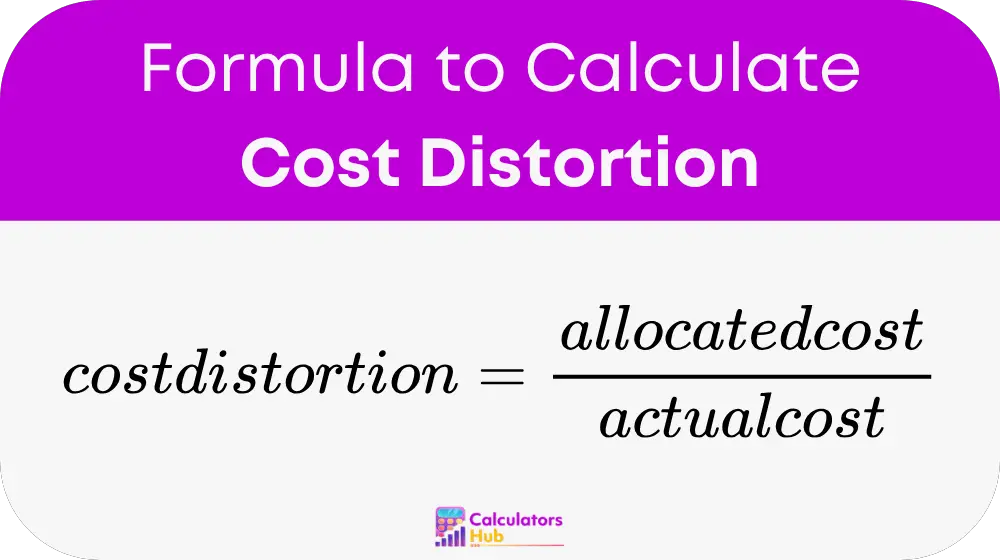The Cost Distortion Calculator is a specialized financial tool designed to quantify the difference between allocated costs and actual costs for a product, service, or activity. It helps businesses identify discrepancies in their costing methods, improving accuracy in pricing, budgeting, and resource allocation.
Cost distortion occurs when an allocation method inaccurately assigns costs, leading to over-allocation (assigning too many costs) or under-allocation (assigning too few costs). This calculator provides a clear measurement of these discrepancies, ensuring that decisions are based on accurate cost data.
This tool is particularly valuable in manufacturing, service industries, and project management, where cost allocation impacts profitability and efficiency.
Formula of Cost Distortion Calculator
The formula for calculating cost distortion is:

Detailed Formula Components
- Allocated Cost:
The cost assigned to a product, service, or activity using a predetermined method, such as activity-based costing or overhead allocation. This is typically measured in monetary units, such as dollars. - Actual Cost:
The true cost incurred for the product, service, or activity, also expressed in the same monetary units. - Cost Distortion:
The difference between allocated and actual costs:- A positive value indicates over-allocation, meaning more costs were assigned than actually incurred.
- A negative value indicates under-allocation, meaning fewer costs were assigned than actually incurred.
Interpretation:
- Positive distortion may suggest inefficiencies in cost allocation.
- Negative distortion might indicate underestimation, which can lead to underpricing or poor budgeting.
General Terms Table
Here is a table of commonly searched cost distortion scenarios for quick reference:
| Allocated Cost ($) | Actual Cost ($) | Cost Distortion ($) | Interpretation |
|---|---|---|---|
| 5,000 | 4,500 | 500 | Over-allocation |
| 7,000 | 7,000 | 0 | Accurate Allocation |
| 10,000 | 12,000 | -2,000 | Under-allocation |
| 15,000 | 13,000 | 2,000 | Over-allocation |
| 20,000 | 18,500 | 1,500 | Over-allocation |
This table helps businesses quickly identify patterns in their cost allocation practices without manual calculations.
Example of Cost Distortion Calculator
Scenario:
A manufacturing company allocates $8,000 in costs to a product line using traditional allocation methods. However, after conducting a detailed analysis, the actual cost incurred is $6,500.
Calculation:
Using the formula:
cost_distortion = allocated_cost – actual_cost
Substitute the values:
cost_distortion = 8,000 – 6,500
cost_distortion = 1,500
Interpretation:
The cost distortion is $1,500, indicating an over-allocation. This means the company assigned $1,500 more than the actual cost, which could lead to inaccurate pricing or profitability analysis.
Most Common FAQs
The Cost Distortion Calculator is critical for businesses to ensure accurate cost allocation. It helps identify discrepancies that can impact pricing, budgeting, and profitability, ensuring more informed financial decisions.
Cost distortion occurs when the chosen cost allocation method does not accurately reflect actual costs. This can happen due to the use of outdated allocation bases, incorrect data, or overly simplified methods.
Businesses can reduce cost distortion by using more accurate costing methods, such as activity-based costing, regularly updating allocation bases, and validating actual costs against allocated costs.